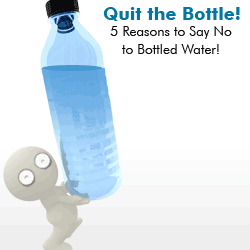
It's not fun when you can't keep your food down. Food poisoning is something many people may associate raw chicken- and with the school cafeteria, buffet lines, and greasy spoon diners. But the truth is, food contaminants can lie in the least unlikely of places and catch an otherwise strong tummy by surprise. It is crucial to be as cautious as possible when preparing food at home. But- when food poisoning strikes, it's good to know that there is a cure in something as easy as H20.
Food poising is an illness that results from eating foods contaminated with harmful parasites, organisms, and viruses. Much to the surprise of many, there are actually about 250 organisms that can cause this ailment. The major symptom of food poisoning is diarrhea, followed by vomiting, nausea, and/or stomach cramps. Most food poisoning episodes last just a day or two, while organisms like E.Coli and salmonella can cause more serious problems.
A major complication of food poisoning is dehydration because of diarrhea. Its sister symptom is vomiting which causes the body to lose a lot of fluid. So an important treatment would be to replace those lost fluids, perhaps with plenty of safe drinking water and even electrolyte-enhanced rehydration drinks (not sports drinks). Juices, soda, and sports drinks contain sugar that the body may not be ready for. WebMD, as a way to replace the fluids, recommends drinking a glass of water per large loose stool exited from the body. Usually, home treatment with water can help, but in more severe cases a trip to the ER may end up with an IV inserted into the patient.



